Super User
Roll-Kraft Celebrates 50th Anniversary in the Tube & Pipe and Roll Forming Industry
Roll-Kraft is pleased to commemorate its 50-year anniversary of designing and manufacturing tooling for the tube & pipe and roll forming industry. Founded in 1963 by George F. Gehrisch, the company’s goal has always been to be the most reliable supplier of custom-designed roll tooling to every producer who uses welded tube or pipe products or roll forms open shapes.
 The modest original facility in Willoughby, OH, with its minimal staff, has been replaced by a 110,000 sq. ft. factory in Mentor, OH., and two additional plants, including one based in Canada, totaling more than 100 employees. The company now operates daily with a total of fifty CNC (computer numerical control) machines, including multiple large-capacity machines. The U.S. headquarters factory produces roll tooling up to 40” in diameter, while the Canadian plant produces tooling up to 52” diameter - quite a sharp contrast to the customer requirements during the early years.
The modest original facility in Willoughby, OH, with its minimal staff, has been replaced by a 110,000 sq. ft. factory in Mentor, OH., and two additional plants, including one based in Canada, totaling more than 100 employees. The company now operates daily with a total of fifty CNC (computer numerical control) machines, including multiple large-capacity machines. The U.S. headquarters factory produces roll tooling up to 40” in diameter, while the Canadian plant produces tooling up to 52” diameter - quite a sharp contrast to the customer requirements during the early years.
In 2001, Roll-Kraft became certified by the International Organization for Standardization to ISO 9001:2000 With Design, and is currently certified to ISO 9001:2008 With Design. The original certification was earned in 1997, and through annual audits, the company has maintained certification every year since then.
Roll-Kraft tooling is known worldwide and is used in fifty countries around the globe. The company has a fully staffed engineering department with expertise in designing tooling to manufacture a myriad of products, from furniture, curtain rods, and steel doors, to highway road signs, and even tooling used in the mining and energy sector.
Over the years, the company has added regional and on-site seminars to offer opportunities for companies in the industry to provide tube & pipe and roll forming training to their personnel. These efforts were acknowledged by the Tube & Pipe Association’s Industry Education Activities Award in 2003, which was awarded to Roll-Kraft’s Robert Sladky for his more than 30 years of training services.
Roll-Kraft is happy to celebrate this benchmark in its history and looks forward to many more years of serving the tube & pipe and roll form industry.
Over 43 per cent more gas (!) as Hayley Group wows customer with new AD/Biogas mixing system
A leading food waste-to-energy operation has increased its biogas yields by an average of more than 43% - due to a new digester mixing system.
After evaluating the performance of the facility’s first digester, built a decade ago, engineering component specialists Hayley Group were consulted about the availability of an alternative, superior mixing system for its customer’s second digester; mixers that unlike those in first tank, would eliminate typical biogas process problems such as foam, blocking and crusting – and in doing so, help boost the levels of methane.
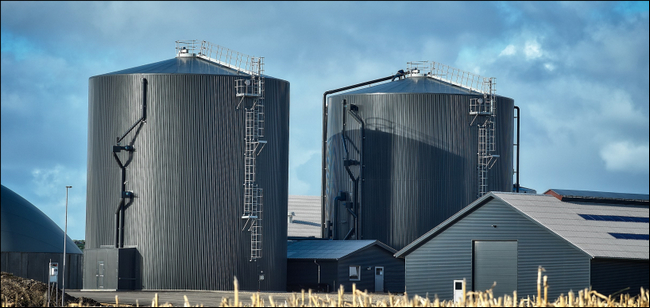 Hayley Group has helped its customer achieve a massive increase in biogas yields by choosing a digester mixing system from Landia
Hayley Group has helped its customer achieve a massive increase in biogas yields by choosing a digester mixing system from Landia
Hayley Group’s Engineer, Rob Bentley, said: “We constantly look to help customers improve efficiencies. This project is of particular note, because with the new, superior mixing system, the increase per cubic metre in gas from the second digester is over 40%. This is extremely encouraging to say the least, especially when you consider that the second digester also has 10% less capacity than the older first tank”.
He added; “The first digester with its compressor mixing set-up continues to produce a fair bit of gas, but when we carefully evaluated what would be best for the second digester, we recommended a pump/mixing system from Landia”.
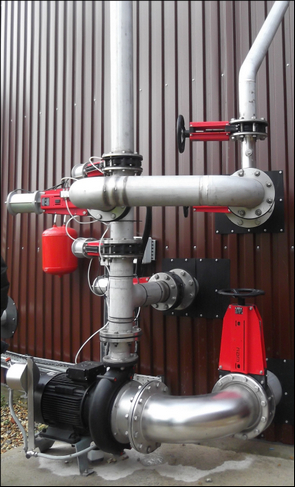 Outside the tank l Landia's digester mixing systemUtilising the chopper pump that Landia invented back in 1950, complete with venturi nozzles, the digester mixing system that is now producing such high levels of gas for the second digester, has an external knife system to continuously reduce particle sizes and keep solids in suspension.
Outside the tank l Landia's digester mixing systemUtilising the chopper pump that Landia invented back in 1950, complete with venturi nozzles, the digester mixing system that is now producing such high levels of gas for the second digester, has an external knife system to continuously reduce particle sizes and keep solids in suspension.
Rob Bentley continued: “Our role as a trusted partner also includes helping maintain the smooth and safe running of operations, as well as helping to improve operational efficiencies, so Landia’s mixing system was a clear front runner – not just because we were confident with its reliability and gas-producing capability, but from past experience, a company that like us, gets stuck in when help is needed - with a fast turnaround”.
‘A more robust mixing system’
With the unpredictability of food waste feedstock, dissolved solids (DS) at the food waste-to-energy facility are typically around 16-18%, but can be as high as 22%. This was an area, that with lessons learned from blockages and downtime from the first digester, saw the clear need for a more robust mixing system for the second digester that could withstand the tough demands made upon it.
‘The increase in gas speaks for itself’
“Our customer has not seen the Landia Digester Mixing System ever struggle to cope”, added Bentley. “Over time in the first digester, plastics would inevitably float to the top where they’d form a blanket and then a crust, which would eventually have to be dug out. This was a rotten job with plenty of unwanted downtime. Landia’s chopper pumps simply do not allow that build-up of material to happen. The success of the second digester, which has also seen reduced maintenance times and lower parasitic load means that for a third digester currently under construction, our customer has not surprisingly ordered a second Landia’s pump/mixing system. On top of the benefits being seen as part of the constant fine-tuning of the process, the increase in gas speaks for itself”.
On average, Digester 1 sees a feedstock intake of 118 tonnes of dry solids per day, which produces a gas flow of 27,000 Nm3 (Normal Meter Cubed per Hour) per day.
In comparison, Digester 2 (10% smaller), sees a feedstock intake of 110 tonnes of dry solids per day, which produces a gas flow of 36,000 Nm3 (Normal Meter Cubed per Hour) per day.
Rob Bentley continued: “Assessing the change to a more resilient digester mixing system, our customer anticipated a decent increase in gas yields – but as high as 43% is phenomenal. You can also see a big difference in the colour of the digestate that is produced.
As part of the support process, Hayley Group has also assisted its customer in replacing an ineffective and troublesome pump unit in its hydrolysis tank with a new three-pump Landia system.
‘Energy-savings are also very apparent’
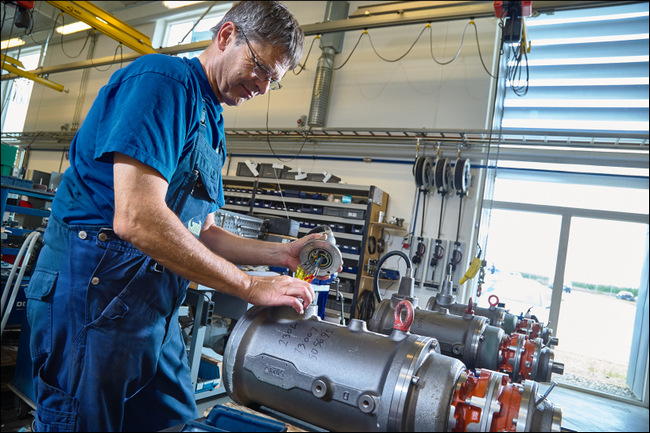 Landia and Hayley Group have worked closely together on maximising biogas yields for AD operators
Landia and Hayley Group have worked closely together on maximising biogas yields for AD operators
“Previously, foaming was an issue,” continued Rob Bentley. “To be fair, too much was being asked of just one pump, but in addition to the problem with foaming – and way too much settlement of solids – the existing supplier was very slow on replacement parts, which just isn’t good enough for a 24/7 food waste-to-energy plant. Uncertainty in getting spares for the site’s pasteurisers was not acceptable, and certainly not up to the standards that we work to, so in total, including two reception tanks and a holding tank, there are now 11 Landia pumps in active use, with three more ready to go into service for the new, third digester. Energy-savings are also very apparent, because unlike other mixers that have to run 24/7, the Landia Digester Mixing System usually only requires 20 minutes on and then 20 minutes off”.
He concluded: “Reliable equipment and easy maintenance are very important of course, but even with the best kit in the world, back-up is key. Landia very much shares the Hayley Group commitment in being there when needed to help customers keep their processes going, without unnecessary delays.
“At this food waste to energy facility, the big increase in biogas yields shows without doubt just how beneficial a resilient and well-designed digester mixing system can be to the success of an AD/biogas plant”.
Charging operating system EcoG | OS grows significantly faster in 2021 than the overall e-mobility market
The e-mobility startup EcoG has outperformed a rapidly growing market in 2021. The company, which specializes in operating systems for charging stations, achieved a market share of more than ten percent for DC fast charging stations in Europe. According to CharIN e.V., 29,000 CCS fast chargers have been set up in Europe by the end of 2021. The year before, that number was just under 13,000 (according to the European Alternative Fuels Observatory - EAFO). Consequently, in 2021, EcoG has supplied almost 10% of the CCS systems in Europe with controllers and the operating system EcoG | OS.
EcoG grew significantly faster than the overall market. Within two years of market entry, EcoG launched the EV charging operating system EcoG | OS and has taken a leading position in Europe. The system is used, among others in the DC fast charging stations Siemens – Sicharge D and i-charging – blueberry. In addition, EcoG | OS is active in the US and since 2021 also in India.
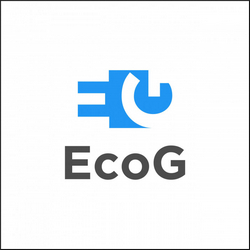 The high increase is due to the simple integration of EcoG | OS. Additionally, the starter kit gives customers the opportunity to develop prototypes for charging stations within a very short time. Since the operating system covers all core functions of the loading process, it is also very easy to develop your own software interfaces and integrate them into business processes with B2B apps.
The high increase is due to the simple integration of EcoG | OS. Additionally, the starter kit gives customers the opportunity to develop prototypes for charging stations within a very short time. Since the operating system covers all core functions of the loading process, it is also very easy to develop your own software interfaces and integrate them into business processes with B2B apps.
This favors the market development of electromobility. It is a fact that Europe is not progressing fast enough in the development of charging stations particularly DC chargers. According to the World Energy Outlook 2021 of the International Energy Agency (IEA), around seven million quick charging points should be set up in Europe alone by 2030 to make charging easy for all EV drivers and to provide electricity anywhere and anytime. In order to achieve this goal, industry and politics must ensure that the number of DC chargers doubles every year.
A solution like the operating system EcoG | OS, consisting of easy-to-integrate hardware and software facilitates professionalization and scaling of DC charging stations. In return, the market demands can be matched for constantly increasing quantities and the technical interoperability of the manifold and diverse vehicle landscape and various systems.
“In the end, all e-car drivers will benefit. They will radically change the way they handle their cars in one essential point: the way in which they charge the energy they need to move forward,” explains Jörg Heuer, co-founder and CEO of EcoG. “Charging is not refueling 2.0. E-drivers will not only drive to a charging station when the battery is empty. Instead, they prefer to charge wherever and whenever there is a possibility to do so - and where they are regularly anyway: shopping malls, supermarkets, furniture stores and fitness studios, for example. This will also change how charging stations are built, set up and operated: we are moving away from isolated solutions towards seamlessly integrated infrastructure on a large scale. The focus is then on enabling the most convenient usage possible.”
“Now, it is the time to start the expansion.The market - both for electric cars and for charging infrastructure - is picking up speed after a phase of normal growth," Heuer continued. “Anyone who prepares early for the exponential increase in electric mobility will also be able to benefit from it. A platform like EcoG | OS makes it easier to be part of this success.”
About EcoG GmbH
EcoG | OS is the software operating system and IoT platform for EV charging stations, the “Android” for EV chargers. EcoG | OS is everything in software needed to develop and run a DC charger. The team of EcoG has been driving standardization and innovation in the e-mobility space since 2008 with the creation of the CCS standard, the OppCharge standard as well as the world’s first DC high power chargers. Today EcoG serves customers worldwide with its products and solutions to build the next generation of DC chargers and monetize them beyond power. Around 10% of 2021 DC charger production in Europe is based on EcoG OS.
Metso Outotec wins major order for siderite calcination plant in Turkey
Metso Outotec has signed an agreement for the delivery of a siderite calcination plant to Hekimhan Madencilik, a subsidiary of Koloğlu Holding, located in Malatya, Turkey. The value of the order is approximately EUR 23 million, and it has been booked in Metals’ Q1/2022 orders received.
Metso Outotec’s scope of delivery consists of system design, equipment engineering, manufacturing and supply, and advisory services for the installation of the plant with an annual capacity of 600,000 tons of calcined siderite. The key components of the system include a rotary kiln, cooler, and heat recovery and gas cleaning equipment. The plant startup is expected in the second half of 2023.
“Our solution will enable Hekimhan Madencilik to achieve their production goals,” says Attaul Ahmad, Vice President of the Ferrous & Heat Transfer business line at Metso Outotec. “It was through our strong customer relationship and familiarity with Hekimhan’s processes that we were able to introduce the Metso Outotec Rotary Calcining system and Heat Transfer experts to develop an optimal equipment & system solution for the client,” Ahmad adds. Metso Outotec has previously supported the client with improvements to the operation of their existing calcining line.
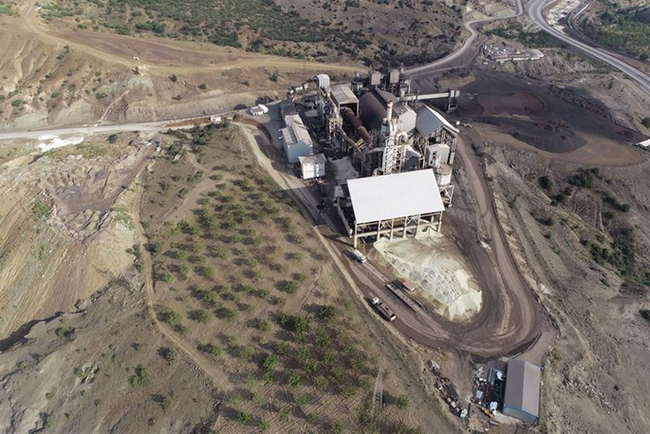 Hekimhan Madencilik Fabrika Resim plant before the siderite calcination plant istallation Courtesy of Hekimhan
Hekimhan Madencilik Fabrika Resim plant before the siderite calcination plant istallation Courtesy of Hekimhan
Metso Outotec is a leading supplier of calcining systems with an installed base of over 1500 rotary kilns. The Metso Outotec technology provides dependable process performance with an emphasis on optimizing fuel efficiency and minimal emissions.
Discover more about our calcining systems on our website.
Metso Outotec is a frontrunner in sustainable technologies, end-to-end solutions and services for the aggregates, minerals processing and metals refining industries globally. By improving our customers’ energy and water efficiency, increasing their productivity, and reducing environmental risks with our product and process expertise, we are the partner for positive change. Metso Outotec is committed to limiting global warming to 1.5°C with Science Based Targets.
Headquartered in Helsinki, Finland, Metso Outotec employs over 15,000 people in more than 50 countries and its sales for 2021 were about EUR 4.2 billion. The company is listed on the Nasdaq Helsinki. mogroup.com, twitter.com/metsooutotec
Stora Enso and Picadeli join forces to reduce single-use plastic in salad packaging
Stora Enso and Picadeli, Europe’s leading take-away salad bar company, are introducing renewable formed fiber lids to replace single-use plastics in take-away packaging. The lids are made of PureFiber™ by Stora Enso, and they are plastic-free, recyclable, and biodegradable. The innovation will help Picadeli reduce approximately 120 tonnes of plastic waste annually.
“Our strategic aim is to grow with sustainable, scalable, and innovative packaging solutions. We do this by supporting strong forerunner brands such as Picadeli in meeting the growing consumer demand for plastic-free and circular solutions. A salad bowl lid is a good example of an everyday single-use plastic item that can make an important difference on climate footprint when replaced by a sustainable alternative,” says Sohrab Kazemahvazi, SVP Formed Fiber at Stora Enso.
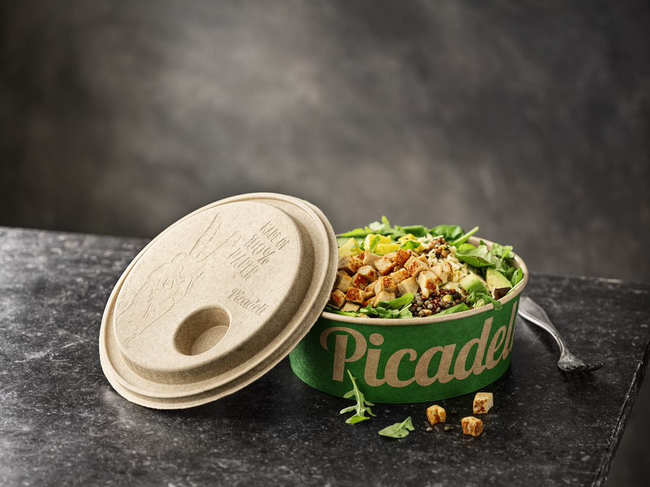
Packaging accounts for 40% of the world’s plastics, most of which are made from fossil oil. The carbon footprint of the PureFiber™ lid is up to 75% lower compared to alternative materials such as plastic or bagasse. PureFiber™ products are produced from wood-based formed fiber using green energy. They contain no plastic, no per- and polyfluoroalkyl substances (PFAS), or any other forever chemicals. The lids provide a good user experience and tightly seal the food inside. The new formed fiber lids will be available for consumers at Picadeli salad bars starting March 2022.
“Food and sustainability have been much discussed in recent years but knowing how to make choices that are both healthy and come with a low carbon footprint is not always easy,” says David von Laskowski, Group CEO at Picadeli. “We work continuously to make tasty, sustainable, and healthy fast food more accessible. Launching the formed fiber lid will further reduce our carbon footprint, supporting our business strategy for sustainability.”
PureFiber™ can be used in a wide range of applications including single-use food packaging items such as plastic-free cups, bowls, clamshells, plates, and lids. PureFiber™ can also be used to replace plastic packaging for other industries, such as in agriculture, electronics, and cosmetics. Formed fiber is a growth business for Stora Enso, and the Group recently announced expansion of its formed fiber production capacity in Europe. The fiber raw material comes from sustainably managed forests.
About Picadeli
Picadeli is a Swedish salad pioneer, driven by the belief that fast food should be food that’s good for you. The idea is simple; through self-served salad bars, democratize healthy food by making it accessible, affordable and appetizing. Since the start in 2009, Picadeli has enabled the grocery retail and convenience stores to offer consumers a fresh and tasty concept and the high-tech salad bars are now to be found in some 2000 stores around Europe and the United States. The company currently has an annual turnover of more than SEK 1.4 billion which represents close to SEK 3 billion in retail value.
Gravitricity secures £912k BEIS grant to develop UK multi-weight energy store
Gravitricity has secured a £912,000 grant from the Department of Business Energy & Industrial Strategy (BEIS) to develop plans for a multi-weight energy storage system – to be built on a brownfield site in the UK.
The Edinburgh-based energy storage specialists will work alongside control and simulation experts Industrial Systems and Control (ISC), winch specialists Huisman and Careys Civil Engineering to deliver the front-end engineering design (FEED) for a 4MWh, multi-weight system using a custom-built shaft.
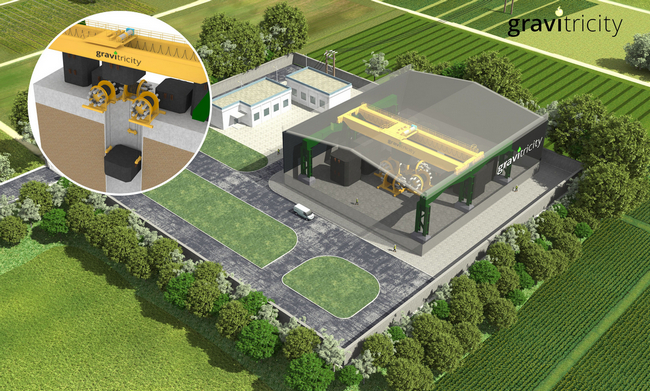
They will also work closely with a site partner to secure the planning consents required to develop and build their multi-weight gravity energy store at a grid-connected site in northern England.
The Gravitricity system stores electricity by raising and lowering heavy weights in a shaft. Analysts at Imperial College predict the firm’s patented multi-weight concept will offer long duration energy storage at a lower levelized cost than alternative technologies, including lithium ion batteries.
The feasibility project will complete in late 2022 and will provide the information required to commence build of the full-scale commercial prototype multi-weight gravity energy store immediately thereafter, subject to securing planning permission and the necessary funds.
The £1.5 million feasibility project follows the success of the company’s 250kW demonstrator, which was commissioned and operated in Leith, Edinburgh, during summer last year.
The company is also advancing plans to build a full-scale single-weight project in a disused mine shaft in mainland Europe, to commence this year.
The FEED study is being supported by the BEIS Longer Duration Energy Storage Competition, a competitive funding scheme to accelerate the commercialisation of innovative energy storage projects which can contribute to net zero. Gravitricity secured a grant of £912,410 towards the £1,520,684 project cost (representing 60 percent funding intensity for SMEs).
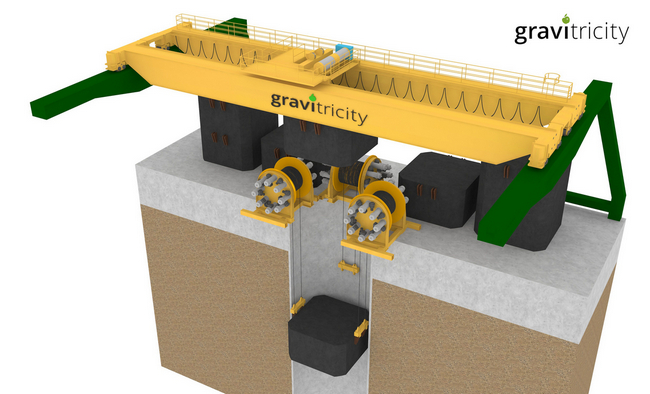
Gravitricity Managing Director Charlie Blair says:
“Finding low-cost, long-life ways to store renewable power will be crucial in the world’s journey to net zero. Our multi weight concept has been proven by our Leith demonstrator where two 25 tonne weights were configured to run independently, delivering smooth continuous output when lowered one after the other. We were able to demonstrate a roundtrip efficiency of more than 80 percent and the ability to ramp up to full import or export power in less than a second.
“A Gravitricity system with multiple weights offers a lower cost per MWh of energy stored – more weights give more mass (or MWhs) whilst the number of hoisting systems (which forms a substantial part of asset cost) does not increase.
“This project will demonstrate multi-weight use and control using a single set of hoisting equipment and will pave the way to custom projects which can be built wherever they are required,” Blair says.
The project has been welcomed by UK Government Energy and Climate Change Minister Greg Hands who said:
“Driving forward energy storage technologies will be vital in our transition towards cheap, clean and secure renewable energy.
“It will allow us to extract the full benefit from our home-grown renewable energy sources, drive down costs and end our reliance on volatile and expensive fossil fuels. Through this competition we are making sure the country’s most innovative scientists and thinkers have our backing to make this ambition a reality.”
The second phase of the project will see Gravitricity commence construction of a first of kind commercial
prototype system at a grid-connected site in the north of England. The company anticipate that a substantial amount of the mechanical design and optimisation of hoisting equipment for fast response applications will be directly transferable from this project to all future applications, as will the control systems being developed.
Latest Gravitricity Explainer - Extended Animation - Spring 2020 from Gravitricity Team on Vimeo.
As future production ramps up, Gravitricity and its partners intend to produce modular systems which will bring fabrication costs down considerably. At the point where multiple schemes are being implemented, the consortium will be able to purchase and operate their own shaft sinking equipment using, offering substantial savings and further improvements to the levelized cost of energy storage.
About Gravitricity
Gravitricity has built strong relationships with Glasgow-based control and simulation experts Industrial Systems and Control Ltd (ISC) and already have a collaboration in place. The multi-weight gravity energy store project will bring together the knowledge gained through the execution of the concept demonstrator project and build on the combined expertise to generate valuable new controls software. ISC work scope will include the simulation of the multi-weight system.
The model will provide a realistic estimate of efficiencies, performance and power delivery profile. This will ensure optimal energy storage with the potential for lowering levellised cost of storage (LCOS) and progress to full commercialisation. ISC will also provide the software to control the subsystems that will provide the overall functionality of the system.
Huisman Equipment have been working closely with Gravitricity under a collaboration agreement since 2018. Huisman supplied the design and hardware for the winch system in the successful Leith demonstrator project and will supply the design and winch system for the Project.
Gravitricity have been working with Careys Civil Engineering since the beginning of 2021. Careys bring more than 50 years expertise in civils engineering design and shaft construction to the project.
Ampelmann mobilises S-type system on the Aqua Helix in unique collaboration with Damen
In a unique collaborative effort, offshore access provider Ampelmann and Damen Shipyards Group are ready to enter the final testing phase of their joint project that fully integrates the S-type motion compensated gangway with the newly constructed fast crew change vessel, the Aqua Helix (FCS 7011). Final testing will commence at the end of February and customer trials are expected to begin mid-March. This all-in-one vessel and gangway is designed to address the growing demand for safe, comfortable, and efficient crew change operations in the North Sea.
The S-type is a top-of-the-line system in a range of recent Ampelmann products aimed at addressing the shortcomings of the offshore crew change market. Fully electric and lightweight, it is especially energy efficient due to its regenerative power system, requires only a single operator and can transfer up to 50 people within five minutes. Specifically designed to endure the roughest of metocean conditions, this system can compensate for waves up to 3m Hs.
The gangway has been fully integrated into the recently launched Aqua Helix - a 70m highly lightweight DP2 vessel that is ideally suited for conditions in the North Sea. The vessel can reach up to 40 knots, actively counteracts vessel motions in the roughest sea states and its spacious interior as well as onboard amenities guarantee the best possible travel experience. Optimised for rapid transits, this fully integrated collaborative crew change solution ensures a safe, efficient and comfortable transfer.
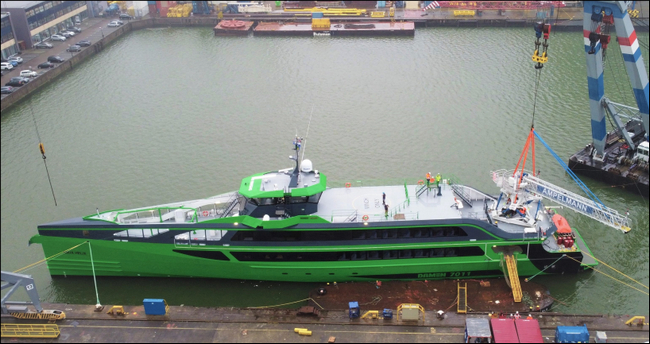
In a novel approach to offshore access, companies can commission the service provided by Damen and Ampelmann on a recurring basis to fulfil their crew change requirements. There is a growing need for flexible marine solutions that increase the efficiency of offshore operations and enable the rapid deployment of highly specialised technical crew. The combination of the Aqua Helix and the S-type will help to satisfy the demand for flexible transfer options by supplying on-demand offshore access.
Damen and Ampelmann’s innovative collaborative effort underpins the need for efficiency and safety in the regional offshore market. In many ways this new service is more than the sum of its parts. The companies’ combined expertise is sure to make an impact on the world of crew change operations.
Ampelmann designs and delivers innovative, safe, reliable and efficient transfer solutions to the offshore energy industries globally. With a track record of more than 7 million safe people transfers, over 18.5 million kg cargo transfers and 400 projects worldwide, Ampelmann operates in Europe, Africa, Asia Pacific, the Americas and the Middle East.
Ampelmann currently maintains a fleet of 65 operational systems used for transferring crews and cargo to offshore structures. Its solutions are tailored to the needs of different market segments, sea states, cargo and crew loads, and are used by the key players in the global industry.
Fine Tubes NORSOK Approval Extended for Specialist Alloy Tubing Products
Precision metal tubing manufacturer, Fine Tubes, has been awarded a five-year extension to its globally-recognised NORSOK approval certification to supply specialist, mission-critical alloy tubing. The NORSOK-accredited tubing alloys from Fine Tubes are: Super Duplex, 6Mo, TP316/316L, N625, and Ti Grade 2. They all offer high strength and corrosion resistance for demanding oil and gas and chemical process applications in hostile environments, including subsea and downhole.
A NORSOK accreditation verifies that a manufacturer has met the globally-accepted international requirements deemed necessary to meet the wider needs of the oil and gas industry. Fine Tubes achieved its prestigious NORSOK approval extension after passing exacting quality standards for its material grades and robust manufacturing facilities. The business also demonstrated compliance with NORSOK requirements during a standard audit.
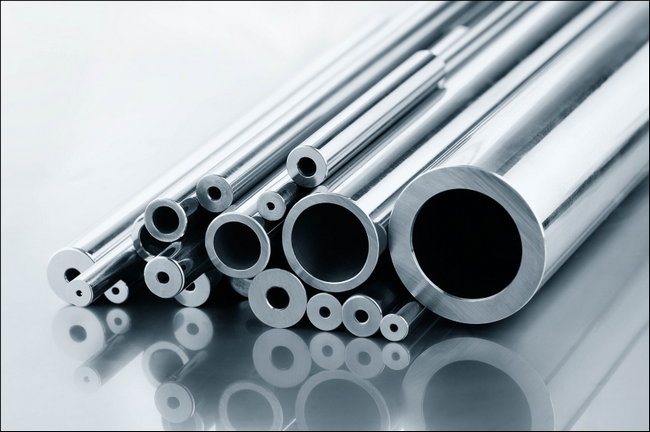
Nick Head, Tube Product Manager at Fine Tubes says, “We are delighted that our industry-leading NORSOK approval has been further extended for our range of alloy tubing products. Each product offers our oil and gas customers exceptional advantages around reliability and corrosion resistance, and we are proud to have these qualities officially recognised.”
NORSOK-approved alloy tubes from Fine Tubes are made to order in a range of corrosion-resistant alloys in standard and non-standard sizes according to customer specifications. They are available in straight lengths that can be seamless cold redrawn and heat treated to suit customer specifications. Benefits include small batch sizes and non-standard tube thicknesses, as well as high pressure resistance up to 100,000psi.
The tubes are engineered to withstand critical oil and gas as well as chemical process applications. These include heat exchangers; flow meters; downhole pressure housings and smart wells; subsea Christmas trees and manifolds; injection and ballast water; and other critical subsea, downhole, and offshore oil and gas instrumentation.
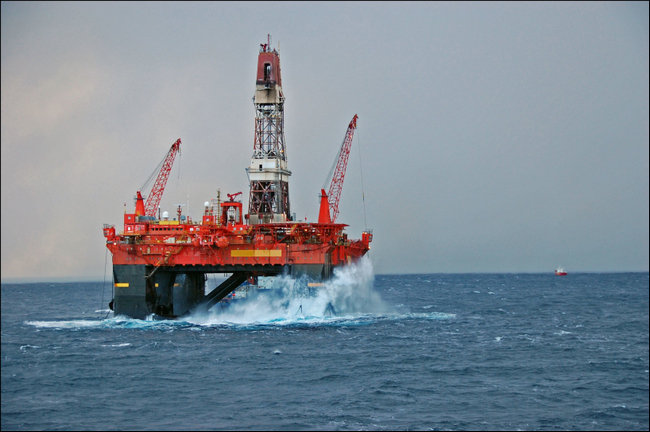
About Fine Tubes
Fine Tubes is based in Plymouth, U.K. The business manufactures precision metal tubing products in a range of stainless steel, super duplex, titanium, and nickel alloys. The high-quality tubes are used in critical applications across several sectors, including energy, aerospace, space, nuclear and defence.
Located in Plymouth, Devon, U.K., Fine Tubes manufactures high-performance tubes in a range of specialty alloys. www.finetubes.com
Fine Tubes produces precision-engineered tubes for critical applications in a wide range of industries, including aerospace, nuclear power, oil and gas, and medical.
Fine Tubes is part of the Specialty Metal Products division of AMETEK Inc., a leading global manufacturer of electronic instruments and electromechanical devices with 2021 sales of $5.5 billion.
ABB introduces new version of ABB Ability™ Performance Optimization for hoists for even better operational analysis and insights
A new version of ABB Ability Performance Optimization for hoists has been launched by global technology company ABB to meet the need for increased digitalization in the mining industry. The upgraded digital service enables condition based maintenance and a higher level of performance optimization through more sophisticated predictive analytics.
- Digital service ensures effective monitoring of hoists and their performance to boost customer uptime and productivity
- User-friendly interfaces and cloud-based dashboard application enable quick analysis and greater insights into hoist operations
- KPI settings based on customer and ABB experts’ inputs will help prevent operations from unexpected, time-consuming and costly shutdowns
ABB Ability Performance Optimization for hoists 3.1 ensures early detection of hoist abnormality in operations and builds on previous versions to improve uptime, availability, performance and productivity of mine hoists by providing actionable information on key performance indicators (KPIs). Hosted on the ABB Ability™ Edgenius dashboard application, ABB Ability Performance Optimization for hoists enables quick analysis and insights into any plant operation.
The new version offers new KPI settings based on customer and ABB experts’ inputs. New KPIs can be set for service hoist availability, hoist cycle statistics, EMS statistics, brake caliper spring operation times, accumulator pre-charge pressure, deceleration variation, guide rope tension, creep distance and clutching time. Cyber security assessments and solutions for protecting customer data are included.
Predictive analysis of a mine hoist’s condition prevents operations from unexpected, time-consuming and costly shutdowns. Data is automatically collected, segregated and managed, then securely monitored and analyzed to generate actionable insights that can help increase production performance, identify safety hazards and provide optimized maintenance scheduling. ABB experts can analyze the data so that potential problems are identified before they occur, and necessary actions can be made at the right time. This improves the availability of the equipment and the overall safety of mining operations.
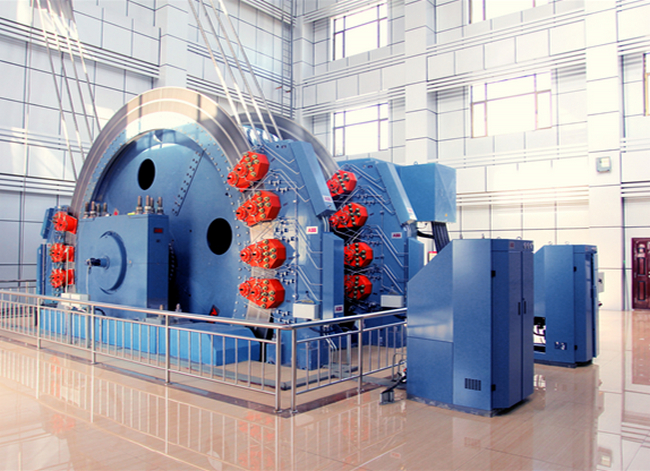
“ABB Ability Performance Optimization for hoists is a key solution and service for harnessing digitalization for optimum condition health, safety, productivity and to support the remote operation of mine hoists. This latest version creates an even more cyber secure bridge between information technology (IT) and operational technology (OT) for mine hoist customers. It is an improved product, offering better insights with more KPIs and enables faster response to failure detection through mail notifications,” said Bengt Hedlund, Global Service Manager Hoisting at ABB. “As the industry looks to make operations more environmentally sustainable, digital services which support remote operation, such ABB Ability Performance Optimization for hoists, can also play a major role in reducing CO₂ emissions and removing the need for on-site service maintenance visits.”
ABB offers safe, optimized and fit-for-purpose hoisting solutions designed by mining engineering teams, and has more than 130 years of experience in hoisting with more than 1,000 hoisting solutions installed worldwide. Digitally connected with ABB Ability Performance Optimization for hoists, ABB hoisting solutions provides highest availability and productivity.
ABB (ABBN: SIX Swiss Ex) is a leading global technology company that energizes the transformation of society and industry to achieve a more productive, sustainable future. By connecting software to its electrification, robotics, automation and motion portfolio, ABB pushes the boundaries of technology to drive performance to new levels. With a history of excellence stretching back more than 130 years, ABB’s success is driven by about 105,000 talented employees in over 100 countries. www.abb.com
ABB’s Process Automation business is a leader in automation, electrification and digitalization for the process and hybrid industries. We serve our customers with a broad portfolio of products, systems, and end-to-end solutions, including our #1 distributed control system, software, and lifecycle services, industry-specific products as well as measurement and analytics, marine and turbocharging offerings. As the global #2 in the market, we build on our deep domain expertise, diverse team and global footprint, and are dedicated to helping our customers increase competitiveness, improve their return on investment and run safe, smart, and sustainable operations.
Akobo Minerals enters into partnership with Oromia Bank
Akobo Minerals (Euronext Oslo – “AKOBO”), the Scandinavian-based Ethiopian gold exploration and mining company, has just announced that it has signed a memorandum of understanding (MOU) with the Ethiopian commercial bank, Oromia Bank.
Under the terms of the MOU, Akobo Minerals and Oromia Bank, as leaders in their respective fields, will cooperate to develop domestic services related to financing new exploration and mining projects, in accordance with international standards. Together, these services can support the advancement of Ethiopia’s domestic mining industry.
 Through their collaboration, Akobo Minerals and Oromia Bank hope to become the leading industry mining partner offering operational and financial services, respectively, for new ventures and projects in Ethiopia. Significantly, this co-operation goes beyond general corporate funding facilities and will also encompass community funding opportunities and the rollout of services to rural areas which do not presently have access to modern financial technologies and services.
Through their collaboration, Akobo Minerals and Oromia Bank hope to become the leading industry mining partner offering operational and financial services, respectively, for new ventures and projects in Ethiopia. Significantly, this co-operation goes beyond general corporate funding facilities and will also encompass community funding opportunities and the rollout of services to rural areas which do not presently have access to modern financial technologies and services.
Jørgen Evjen, CEO of Akobo Minerals, stated: “By bringing our combined mining and banking competences and experience to the table, I believe we can together offer substantial and innovative services that can further the development of the Ethiopian mining industry and local communities.”
He added: “This agreement follows our corporate objective of doing business locally and supporting the Ethiopian banking industry to become competitive in its own backyard against foreign financial institutions.”
Faysel Yassin, Chief Officer, corporate banking and international trade at Oromia Bank, said: “We are impressed with the endeavour and commitment that Akobo Minerals has shown in building a strategic model for both national and regional success. Our own philosophy mirrors theirs and is why we are sure that by working together we can do great things for other mining companies that want to succeed in Ethiopia.”
In the coming months, Akobo Minerals and Oromia Bank will work together to put in place the aspects necessary to build a range of ground-breaking Ethiopian mining services, as set out in the MOU. However, the commitment of the parties to fulfil the roles and responsibilities of the MOU does not constitute a legally binding agreement.
Separate to the domestic mining services MOU, Akobo Minerals is also in negotiations with Oromia Bank to agree a corporate funding package. This will be used to underpin a range of future activities including local community-based environment, social and governance (ESG) initiatives, as well as capital requirements to support Akobo’s mining operations before the end of 2022. Further details will be made available once any final agreement is reached.
About Oromia Bank
Oromia Bank S.C is a private Commercial Bank established in accordance with 1960 Commercial Code of Ethiopia, by the Licensing and Supervision of Banking Proclamation No. 592/2008 and started operation in 2008 G.C. Initially, number of shareholders is 5,000 and now more than 14,000. The main purpose of its establishment is improving financial accessibility and providing full-fledged and best quality commercial banking services. Oromia Bank SC was first established by trade name of Oromia International Bank SC, and rebrands itself to ‘Oromia Bank SC’ by changing both trade mark and its trade name in December 2021.
About Akobo Minerals
Akobo Minerals is a Scandinavian-based gold exploration company, with ongoing exploration and boutique mining developments in the Gambela region and Dima district of southwest Ethiopia. Operations were established in 2009 by people with long experience from both the public mining sector in Ethiopia and the Norwegian oil service industry. Following mineral discoveries, the company is engaged in mining studies to advance the project to production, alongside exploration core drilling.
Akobo Minerals is transforming itself to support an increased pace of core drilling. At both its key targets - in Segele and Joru - the company has released exceptionally high-grade gold results in the Segele deposit, while core drilling and trenching at Joru have intersected both high-grade gold zones and large wide zones near the surface. The company has an excellent partnership with national authorities and places ESG at the heart of its activities – including a ground-breaking community program.
Akobo Minerals has a clear strategy aimed at building a portfolio of gold resources through high-impact exploration and mining, while adhering to a lean business operation. The company is headquartered in Oslo and is listed on the Euronext Growth Oslo Exchange under the ticker symbol, AKOBO.
